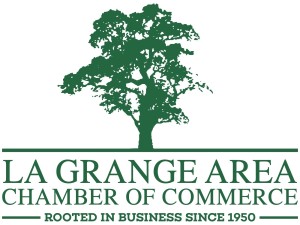Hiring Smart: How to Build a Resilient Team From Day One
Building a business means choosing who you’ll bet the future on. Each hire becomes a decision about speed, stability, risk, and rhythm. A sharp candidate can carry complexity before systems exist. A poor fit can introduce drag you don’t detect until it’s too late. Culture begins with the first five people, whether you’ve defined it or not. Hiring is where that culture gets built — or compromised.
Get the Job Description Right — or Get the Wrong Person
The best hires don’t just fill roles; they extend them. But only if the role itself is defined with enough clarity and nuance to attract someone with aligned expectations from the start. Vague titles, layered with buzzwords, won’t speak to top-tier talent; they confuse or mislead. Your description should name the outcomes expected, the core tools or systems in play, and the specific problems this person will own. If you’re hiring a marketing lead, say whether they’ll manage budget, staff, or strategy. Don’t leave it to guesswork. Candidates should see themselves in the role and know what success looks like within 90 days.
Treat Hiring Like Engineering — Not Gut Feel
Charisma in interviews is a poor predictor of long-term fit. That’s why your process should rely on standardized interview workflows, not vibe checks. By asking every candidate the same core questions and scoring them against pre-defined criteria, you build in fairness and data. It also forces your team to define what matters most in the role: adaptability? system knowledge? leadership under pressure? These frameworks give junior interviewers confidence and help senior leaders avoid overreliance on intuition. A strong hiring system doesn’t eliminate instinct; it validates it with structure.
Set the Tone From Day One With Inclusive Onboarding
The best onboarding isn’t a one-size-fits-all checklist. It’s a curated experience designed to welcome diverse team member needs. That might mean providing ramp-up time for neurodiverse hires, translation tools for global teammates, or pairing new staff with cultural insiders in your company. Get specific: does your onboarding help someone ask “dumb questions” without judgment? Is there scaffolding for independent learning, or does every step require a Slack ping? The faster someone feels understood — not just included — the faster they perform.
Don’t Let Language Gaps Undermine Trust
Hiring across regions or backgrounds? The best ideas get lost fast if people can’t understand each other. When onboarding stretches across borders or languages, an audio translator as educational tool can transform early team-building. Imagine a new hire hearing onboarding instructions in their native language — it’s more than access, it’s respect. These tools reduce friction and signal that clarity is a shared responsibility. Building a multilingual, multicultural team means meeting people where they are and giving them tools to meet you, too.
Make It Obvious Why Someone Should Work With You
Talented people have options. They scan your site and your job post and ask: why here? That’s where clear employer brand signals make the difference. Show, don’t sell. Publish team stories, founder letters, or “day in the life” snapshots that let culture come through. Spell out values that aren’t vague — instead of “we value excellence,” say, “we ship on time and own mistakes.” Let candidates feel the future they’re entering before they apply.
Don’t Let Legal Details Derail Your People Ops
New founders often overlook employment law until it bites them. That bite can mean fines, disputes, or stalled hiring. Before you onboard anyone, run a checklist for legal protection covering things like classification (W2 vs contractor), wage transparency, required notices, and anti-discrimination clauses. Many states have specific onboarding rules; skipping them doesn’t mean skipping liability. Put these checklists in your internal wiki, and treat them like fire drills: boring until they save you. Good culture isn’t just kindness, it’s safety, backed by process.
Use Screening to Minimize Regret Later
You want to trust — but you need to verify. Especially when one bad hire could hurt morale, client trust, or operational rhythm. Screening to spot red flags isn’t about catching liars — it’s about catching mismatches before they land. That might include credential checks, skill assessments, or even social media audits when appropriate. Transparency is a two-way street: tell candidates early that your process includes due diligence, and they’ll respect the rigor. Hiring is a long game — set the tone by protecting everyone’s time and energy.
Early-stage hiring decisions echo for years. Every shortcut: unclear roles, rushed interviews, skipped onboarding, becomes a debt your future self will repay. But done well, hiring is a strategic lever: it shapes culture, reduces churn, and makes your business more adaptive. Use systems, checklists, translation, and branding to signal professionalism and care. Your first five hires set a rhythm. Make sure it’s one worth repeating.
Discover how the business community of the La Grange Area Chamber of Commerce can empower your business with exclusive resources and connections!

